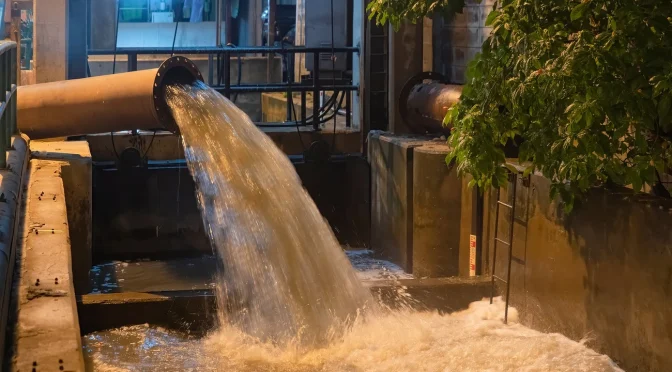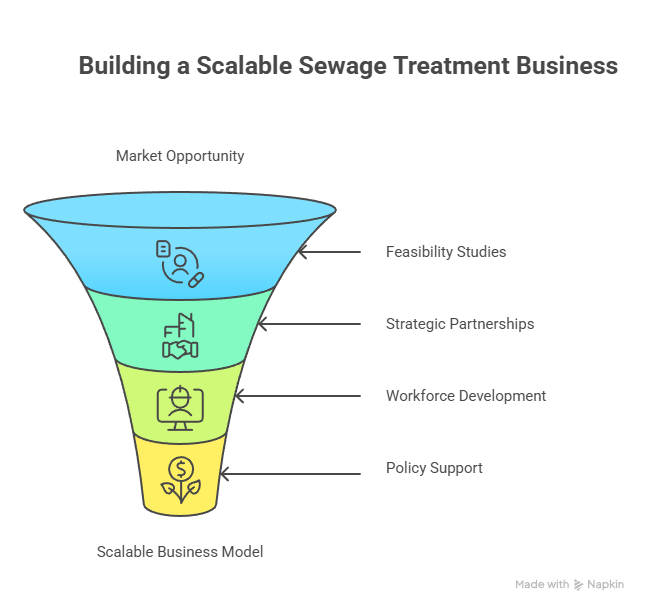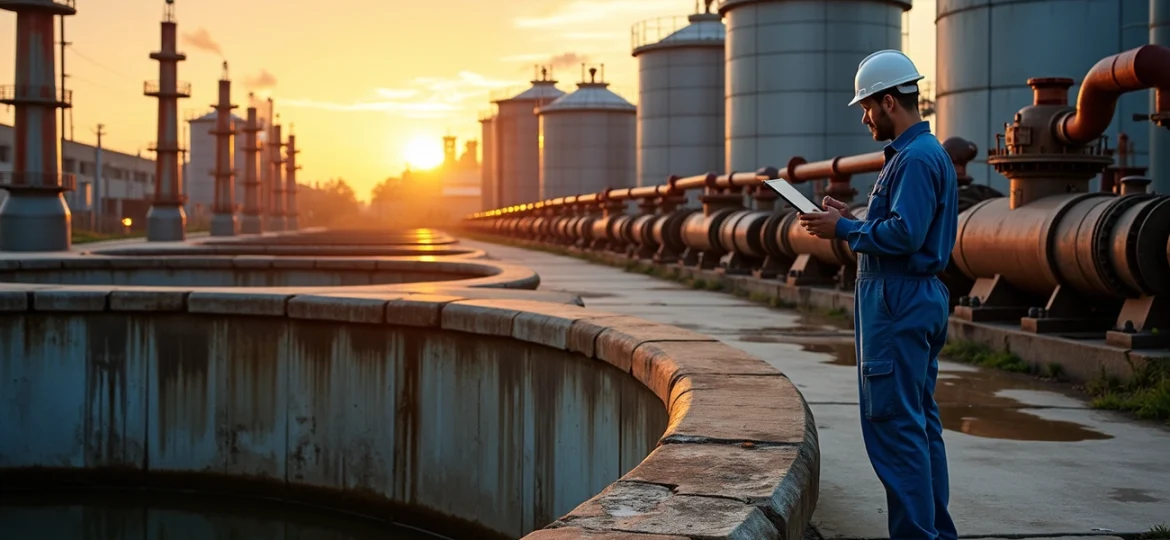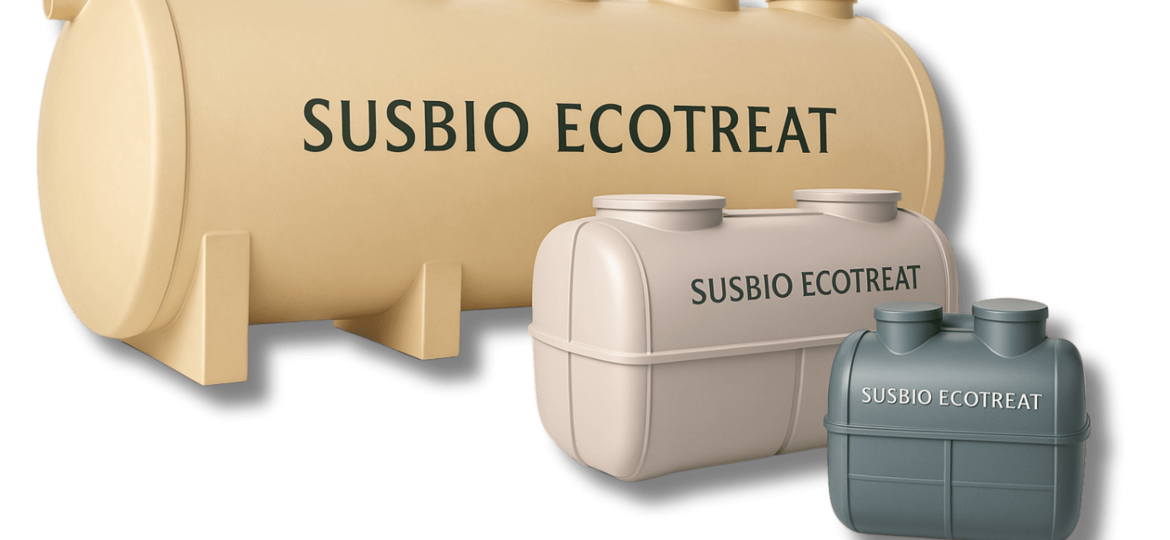Did you know that about 80% of our daily household water ends up as sewage?
These numbers tell an interesting story: sewage treatment isn’t just good for the environment—it’s a potential goldmine. Treatment plants can earn extra money by selling recovered metals. The treated water helps feed crops, cool factories, and refill lakes.
Sewage water treatment is a smart solution for companies and cities that face water shortages. Each drop of treated sewage we reuse for non-drinking purposes helps preserve our rivers, reservoirs, and groundwater sources. The organic waste will make up nearly 50% of India’s 165 million tons of waste by 2030. This waste can become valuable resources.
The advantages go beyond helping nature. Treated wastewater reduces costs tied to water extraction and transport. What was once a disposal headache can now create wealth. Sewage treatment plants create jobs and recover essential nutrients that plants need.
This piece will show you how to build a profitable sewage treatment business. You’ll learn everything from the simple treatment process to advanced methods. We’ll demonstrate how waste can become your successful business model.
From Waste to Resource: Rethinking Sewage Water

The world’s approach to water management is changing faster than ever. A shocking 80% of the world’s wastewater flows into the environment without proper treatment. This creates an environmental crisis and presents a great business chance for innovative entrepreneurs.
Moving from disposal to reuse
Traditional sewage treatment mainly focused on disposal—treating waste just enough to reduce immediate environmental damage. But a fundamental change is happening. The old “use and dispose” model is giving way to a circular approach that turns wastewater into a valuable resource. This new view sees sewage as an asset to use rather than a problem to solve.
The Latin America and Caribbean region treats only 30-40% of their collected wastewater. This shows the huge untapped potential worldwide. The circular economy turns sewage water from waste into renewable resources—clean water, energy, and nutrients.
Environmental and health benefits of sewage water treatment
Good sewage treatment brings many environmental advantages. It protects water bodies from pollution that damages aquatic ecosystems. Raw sewage contains harmful bacteria, viruses, and parasites that endanger both humans and wildlife.
Communities that treat their sewage well see these benefits:
- Less pollution in natural water bodies
- No nutrient overloading that leads to toxic algal blooms
- Better biodiversity in rivers, lakes, and coastal areas
Many regions still find it hard to implement proper treatment. That’s why innovative solutions like SUSBIO ECOTREAT packaged sewage treatment plants have become future-ready options. These plants combine biological processes with physical filtration to achieve better purification.
How sewage treatment supports water security
Water scarcity affects 36% of the world’s population. Sewage treatment is a vital path to water security. Treated wastewater becomes a reliable alternative source that stays available even during droughts.
Sewage treatment plants create a sustainable water supply for:
- Irrigation in agriculture
- Industrial processes and cooling
- Landscape maintenance
- Groundwater recharge to prevent depletion
The real-world effects are remarkable. San Luis Potosi, Mexico reduced costs by 33% when they switched from groundwater to treated wastewater for power plant cooling. In India, treated wastewater helps bring lakes back to life and boosts groundwater levels by over 50% in some areas.
Technologies That Make Sewage Profitable
Technology has reshaped traditional sewage treatment into a profitable enterprise. We just need the right technology to extract value from what many used to call waste.
Overview of sewage water treatment process
The sewage treatment process works through three key phases. Primary treatment removes large particles and solids through screening and sedimentation. Secondary treatment uses biological processes to break down organic matter. The final tertiary treatment polishes the effluent through disinfection and additional filtration. This approach reduces environmental pollution and creates opportunities to recover resources.
Biological and chemical treatment methods
Biological treatment methods make use of microorganisms to decompose organic waste through aerobic or anaerobic processes. The activated sludge method combines microorganisms with sewage, and aeration creates ideal conditions to break down organic solids. Chemical treatments like coagulation and flocculation use substances such as alum to destabilize particles and form flocs that separate easily. These methods remove 85-90% of biological oxygen demand and suspended solids effectively.
Energy recovery: biogas, electricity, and heat
Energy recovery might be the most profitable part of sewage treatment. Anaerobic digestion of sewage sludge creates biogas with 55-65% methane content. This biogas works well in combined heat and power systems to generate electricity and capture heat. Biosolids can produce one megawatt of electricity for every 25-30 MGD of treated wastewater. Some facilities generate enough biogas to run their operations completely. A plant in Tirol, Austria even produces 120% of its energy needs.
Advanced systems like SUSBIO ECOTREAT
SUSBIO ECOTREAT stands out as India’s most innovative packaged sewage treatment plant. Its unique dual-treatment process combines anaerobic and aerobic methods to purify wastewater better. The system runs on 90% less electricity than conventional plants and operates silently. The plant’s durable fiber-reinforced plastic construction and prefabricated design are a great way to get modular, space-efficient installation that works for different applications. SUSBIO ECOTREAT shows us the future of environmentally responsible, profitable sewage treatment with its budget-friendly operation costs and long-term durability.
Creating Value from Byproducts
Sewage treatment creates many valuable byproducts that reshape the scene of waste management into a profitable venture. Here’s how these resources open up sustainable business opportunities.
Nutrient recovery for agriculture
Wastewater has essential plant nutrients – mainly nitrogen and phosphorus. We can recover and recycle these as fertilizers. This helps solve the problem of unregulated wastewater discharge and provides affordable fertilizers in developing regions. The quickest way to recover these nutrients is to produce struvite (magnesium ammonium phosphate), which works great as a phosphorus source. Plants grown with these recovered nutrients often grow and yield better than those with regular fertilizers. The treatment of separated concentrated streams locally is an environmentally responsible way to make these nutrients valuable.
Compost and soil conditioners from sludge
Mixing sewage sludge (SS) with garden waste creates great soil amendments that boost soil nutrients like nitrogen, phosphorus, and potassium. These composts add more organic matter and improve electrical conductivity in soil without adding heavy metals. Yes, it is possible to reduce heavy metal reactivity by a lot when you process them properly into biosolids. This happens because of organic matter and phosphate concentration. SUSBIO ECOTREAT systems turn sludge into safe, nutrient-rich soil conditioners for the best results.
Recovering metals and industrial chemicals
Municipal sewage sludge contains precious metals that you can extract through solvent extraction techniques. Tetrakis(hydroxymethyl)phosphonium chloride ionic liquid works really well and you can reuse it for several extraction cycles. Membrane-based technologies work better than old methods. They help recover metals from low-concentration streams and are better for the environment. These methods let you selectively recover valuable metals like gold, silver, platinum, and rhenium.
Using treated water in cooling and cleaning
Treated sewage effluent (TSE) works as a good alternative to groundwater in industrial cooling systems. A pilot study showed that cooling tower operation cycles almost doubled (from 2 to 3.5) with TSE as makeup water. This cut water needs by 27%. For a 1,200-ton AC plant, you save 16,501 m³ of water every year. The treated water is also great for controlling dust at construction sites, washing vehicles, cleaning floors, and watering plants.
Building a Scalable Business Model

A profitable sewage treatment business needs careful planning and the right execution strategy. The global water and wastewater treatment market reached USD 323.32 billion in 2023. Experts project this number to hit USD 617.81 billion by 2032.
Feasibility studies and market research
You need a full picture before starting a sewage treatment venture. This helps identify affordable solutions and prevents costly delays or technology mismatches. Good studies review different technology options based on cost-efficiency, energy use, and regulatory compliance. A detailed wastewater analysis is vital to understand treatment needs and potential revenue streams.
Partnering with industries and municipalities
Strategic collaborations are the foundations of successful sewage treatment businesses. The hybrid annuity model (HAM) shows how public-private partnerships work. Governments pay 40% of capital costs during construction, and the remaining 60% over 15 years based on performance. This model has brought in over INR 126.57 billion in India, with INR 54847.29 million from private sectors. Industries also create lasting revenue streams when they reuse treated wastewater. Indian Oil Corporation demonstrates this by using treated wastewater for refinery cooling.
Training, staffing, and plant operations
The right workforce development makes plant efficiency possible. Wastewater professionals must know how to run treatment facilities, monitor processes, and meet regulations. The core team includes treatment plant operators, water resources engineers, and environmental compliance specialists. Training programs should cover safety protocols, technical operations, maintenance procedures, and compliance requirements. This builds skilled teams that maximize plant performance.
Policy support and financial incentives
Government policies shape business success significantly. Financial support includes capital subsidies that cover 25-70% of project costs under Swachh Bharat Abhiyan. Companies get 100% tax deductions for wastewater treatment investments under Section 35AD. The Ministry of MSME offers 2% interest subsidies on loans up to ₹1 crore. SUSBIO ECOTREAT, India’s most advanced packaged sewage treatment solution, becomes more attractive with these incentives and lower operational costs.
Conclusion
Sewage treatment brings together environmental responsibility and business chances. This piece shows how waste can become a valuable resource through innovative approaches and new technologies.
The transformation from disposal to reuse creates multiple revenue streams. Smart entrepreneurs now extract value through resource recovery instead of just treating sewage for disposal. The 80% of domestic water that becomes sewage is not a liability but an untapped goldmine.
On top of that, it brings both environmental and financial benefits. Proper sewage treatment leads to clean water bodies, less pollution, and preserved ecosystems. Companies in this sector help the environment while making profits.
Modern technologies make these dual benefits possible. SUSBIO ECOTREAT, India’s most advanced packaged sewage treatment plant, shows this perfect balance. This future-ready solution combines biological processes with physical filtration and uses 90% less electricity than conventional systems. State-of-the-art technology reduces operational costs and boosts environmental outcomes.
Energy recovery shows great profit potential. Biogas from sewage sludge can fully power treatment facilities, with some plants generating up to 120% of their energy needs. Nutrient recovery produces valuable fertilizers, while sludge becomes soil conditioners. Even metals can be extracted and sold.
A full picture is needed before starting a sewage treatment business. Mutually beneficial alliances with municipalities and industries create steady revenue streams. Government policies and financial incentives make businesses more viable.
The global wastewater treatment market should reach USD 617.81 billion by 2032. This shows the massive growth potential in this sector. Entrepreneurs who enter this market now stand at the vanguard of both ecological restoration and economic development.
Sewage treatment has grown way beyond its origins as a public service. It now represents a circular economy model where waste becomes wealth, environmental protection creates financial returns, and innovative solutions like SUSBIO ECOTREAT lead the way. The sewage treatment business turns problems into profits and proves that sustainability and profitability work together perfectly.
Key Takeaways
Transform sewage from waste disposal problem into profitable business opportunity through resource recovery and circular economy principles.
- Sewage contains hidden value: 80% of domestic water becomes sewage, offering untapped revenue through energy recovery, nutrient extraction, and treated water reuse.
- Technology drives profitability: Advanced systems like SUSBIO ECOTREAT use 90% less electricity while generating biogas, electricity, and valuable byproducts from waste.
- Multiple revenue streams available: Recover nutrients for fertilizers, metals for industry, produce compost from sludge, and sell treated water for cooling and irrigation.
- Strategic partnerships essential: Collaborate with municipalities and industries using hybrid models where governments share costs and private sectors manage operations for sustainable returns.
- Government support accelerates growth: Take advantage of 25-70% capital subsidies, 100% tax deductions, and 2% interest subsidies to reduce startup costs significantly.
The global wastewater treatment market is projected to reach $617.81 billion by 2032, making this the perfect time to enter a sector where environmental responsibility meets profitable business opportunity.
Frequently Asked Questions
Q1. What are the potential revenue streams in sewage treatment?
Sewage treatment offers multiple revenue streams, including energy recovery through biogas production, nutrient extraction for fertilizers, metal recovery, compost production from sludge, and selling treated water for industrial cooling and irrigation purposes.
Q2. How does SUSBIO ECOTREAT differ from conventional sewage treatment plants?
SUSBIO ECOTREAT is an advanced packaged sewage treatment plant that combines anaerobic and aerobic methods for superior purification. It operates with 90% less electricity than conventional plants, offers silent operation, and is made from durable fiber-reinforced plastic for modular, space-efficient installation.
Q3. What government incentives are available for sewage treatment businesses in India?
The Indian government offers several incentives, including capital subsidies covering 25-70% of project costs under schemes like Swachh Bharat Abhiyan, 100% tax deductions for wastewater treatment investments under Section 35AD, and 2% interest subsidies on loans up to ₹1 crore from the Ministry of MSME.
Q4. How can treated sewage water contribute to water security?
Treated sewage water provides a reliable alternative water source, especially in water-scarce regions. It can be used for irrigation, industrial processes, landscape maintenance, and groundwater recharge, helping to reduce strain on freshwater sources and improve overall water security.
Q5. What are the environmental benefits of proper sewage treatment?
Proper sewage treatment offers numerous environmental benefits, including reduced pollutant discharges into natural water bodies, prevention of nutrient overloading that causes toxic algal blooms, preservation of biodiversity in aquatic ecosystems, and overall improvement in water quality and public health.






